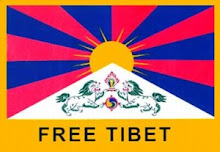
 «Un po’ di sangue zingaro nelle vene e tanti matrimoni e feste in giro per l’Italia, i balli e i canti dei Carpazi e delle comunità arrivate dall’est europeo, le tammurriate dei Sinti del Vesuvio e le canzoni dei parenti Rom molisani, le tarantelle dei Musicanti Calabresi e del Salento e le serenate dei Camminanti Siciliani, lo swing dei Manouche di Reinhardt e delle famiglie di musicisti dell’arco alpino… canzoni e balli di tradizioni musicali diverse, con ritmi, melodie, lingue dagli Urali agli Appennini, dal Vesuvio alle isole del Mediterraneo, proposti nell’originalissimo stile zingaro italiano forgiato dagli Acquaragia Drom. L’atmosfera è quella di un matrimonio, di una animata festa gitana intorno a un grande fuoco da campo: ritmi incalzanti e passionali, melodie struggenti e racconti di storie inverosimili con protagonisti tragicomici di cui si può ridere o piangere. Il viaggio musicale di Acquaragia Drom è sempre condito da un tocco ironico e dolcemente corrosivo che, quando si canta e si balla negli spettacoli, serve a far funzionare un po’ la testa e aiuta anche a sciogliere il cuore. Questa è la mappa musicale sulla quale è tracciato il repertorio degli Acquaragia Drom: un viaggio nella penisola sulla strada (drom) delle musiche delle comunità storiche Sinti e Rom e dei gruppi di più recente passaggio e insediamento...» (Acquaragia Drom)
«Un po’ di sangue zingaro nelle vene e tanti matrimoni e feste in giro per l’Italia, i balli e i canti dei Carpazi e delle comunità arrivate dall’est europeo, le tammurriate dei Sinti del Vesuvio e le canzoni dei parenti Rom molisani, le tarantelle dei Musicanti Calabresi e del Salento e le serenate dei Camminanti Siciliani, lo swing dei Manouche di Reinhardt e delle famiglie di musicisti dell’arco alpino… canzoni e balli di tradizioni musicali diverse, con ritmi, melodie, lingue dagli Urali agli Appennini, dal Vesuvio alle isole del Mediterraneo, proposti nell’originalissimo stile zingaro italiano forgiato dagli Acquaragia Drom. L’atmosfera è quella di un matrimonio, di una animata festa gitana intorno a un grande fuoco da campo: ritmi incalzanti e passionali, melodie struggenti e racconti di storie inverosimili con protagonisti tragicomici di cui si può ridere o piangere. Il viaggio musicale di Acquaragia Drom è sempre condito da un tocco ironico e dolcemente corrosivo che, quando si canta e si balla negli spettacoli, serve a far funzionare un po’ la testa e aiuta anche a sciogliere il cuore. Questa è la mappa musicale sulla quale è tracciato il repertorio degli Acquaragia Drom: un viaggio nella penisola sulla strada (drom) delle musiche delle comunità storiche Sinti e Rom e dei gruppi di più recente passaggio e insediamento...» (Acquaragia Drom)  «A little of Gypsy blood and lots of traditional weddings and feasts all around in Italy: this is Acquaragia Drom. Its original music and dance project will allow you to discover an amazing Italian/Mediterranean-Gypsy style swirling among Rom saltarellos, tarantellas and tammurriatas (folk dances) from the Sinti tribes. Acquaragia Drom is trying to rebuild the musical journey of the Italian Gypsies of the past, singing melodies that are part of the historical communities living in the country a long time ago, playing, at the same time, rhythms of the new Gypsy caravans nowadays. A very special musical travel, even in Italy few people knew about it, developed through the Sinti and Manouche swing of the Alpes, the saltarello of the Molise and Abruzzo, the frenetic tarantella from Sicily, the ritual pizzica of Salento. Acquaragia Drom plays using an "ironic and corrosive" way to present this repertoire in order to make the audience laugh and dance, but also to open their mind about Gypsy problems.» (Acquaragia Drom)
«A little of Gypsy blood and lots of traditional weddings and feasts all around in Italy: this is Acquaragia Drom. Its original music and dance project will allow you to discover an amazing Italian/Mediterranean-Gypsy style swirling among Rom saltarellos, tarantellas and tammurriatas (folk dances) from the Sinti tribes. Acquaragia Drom is trying to rebuild the musical journey of the Italian Gypsies of the past, singing melodies that are part of the historical communities living in the country a long time ago, playing, at the same time, rhythms of the new Gypsy caravans nowadays. A very special musical travel, even in Italy few people knew about it, developed through the Sinti and Manouche swing of the Alpes, the saltarello of the Molise and Abruzzo, the frenetic tarantella from Sicily, the ritual pizzica of Salento. Acquaragia Drom plays using an "ironic and corrosive" way to present this repertoire in order to make the audience laugh and dance, but also to open their mind about Gypsy problems.» (Acquaragia Drom)
Link in comments
You can also find a very good live recording of Acquaragia Drom at Italian Folk Music.























































